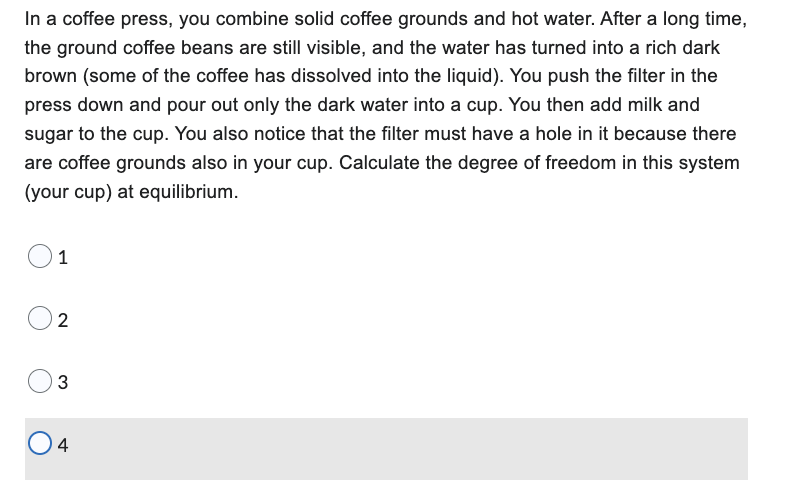In a coffee press, you combine solid coffee grounds and hot water. After a long time, the ground coffee beans are still visible, and the water has turned into a rich dark brown (some of the coffee has dissolved into the liquid). You push the filter in the press down and pour out only the dark water into a cup. You then add milk and sugar to the cup. You also notice that the filter must have a hole in it because there are coffee grounds also in your cup. Calculate the degree of freedom in this system (your cup) at equilibrium. 1 2 3 4
Thermochemistry
Thermochemistry can be considered as a branch of thermodynamics that deals with the connections between warmth, work, and various types of energy, formed because of different synthetic and actual cycles. Thermochemistry describes the energy changes that occur as a result of reactions or chemical changes in a substance.
Exergonic Reaction
The term exergonic is derived from the Greek word in which ‘ergon’ means work and exergonic means ‘work outside’. Exergonic reactions releases work energy. Exergonic reactions are different from exothermic reactions, the one that releases only heat energy during the course of the reaction. So, exothermic reaction is one type of exergonic reaction. Exergonic reaction releases work energy in different forms like heat, light or sound. For example, a glow stick releases light making that an exergonic reaction and not an exothermic reaction since no heat is released. Even endothermic reactions at very high temperature are exergonic.

Step by step
Solved in 2 steps with 1 images









